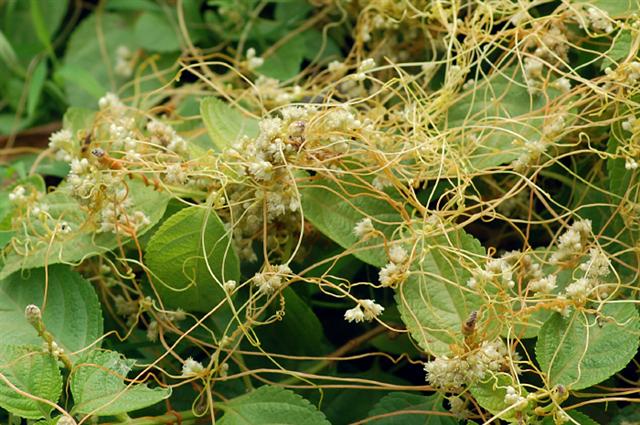Chinese Dodder - Cuscuta chinensis

Common Names: Tu Si Zi, Chinese Dodder, Dodder, Cuscuta chinensis, Cuscuta, Cuscuta spp., Pull-down, Love Vine, Devil’s Hair, Golden Thread, Hellbine, Strangleweed, Otáčka
Latin Name: Cuscuata chinensis
Origin: Asia
Short Introduction
Chinese Dodder, like other plants of its genus, is characterized by its parasitic nature. After germination, it attaches itself to a host plant using specialized filaments. Its root then withers away, making the plant completely dependent on the host for nutrients.
Detailed Description
A parasite that can heal!
Botanical Information
Chinese Dodder is distinguished by its smooth, slender yellow-red stems, which wrap around the host plant much like a vine. Its leaves are extremely small, resembling little scales. Since the dodder absorbs all its nutrients from the host, it does not need to synthesize its own energy—and thus, the leaves are not green as they lack chlorophyll. Small light red flowers cluster together in dense inflorescences, which later develop into hard capsules filled with a large amount of seeds.
Origin and Distribution
Cuscuta, or dodder, originates from Asia and has been primarily used in Traditional Chinese Medicine. Today, it is mainly cultivated and processed in the Chinese provinces of Jilin, Liaoning, and Hebei.
Usage / Dosage
Dodder is especially known for its harmonizing effect on irregular menstrual cycles in women. It also supports the treatment of glaucoma by reducing intraocular pressure, helps with tinnitus, and shows pronounced strengthening action for the immune system. Additionally, it provides protective effects on the liver, spleen, and kidneys. In Eastern countries, dodder is frequently included in herbal blends for balancing yin and yang. Combined with other herbs, it forms a potent aphrodisiac blend. In Traditional Chinese Medicine (under the name Tu Si Zi), it is combined with other herbs for use in cases of impotence, premature ejaculation, and frequent urination. Dodder also helps prevent excessive loss of bodily fluids.
Active Compounds
Dodder seeds contain mainly flavonoids, which possess many beneficial effects for the human body, such as protecting the liver. Studies on mice have also confirmed potential anticancer properties, particularly against skin carcinoma, highlighting its possible therapeutic value.
Traditional Dosage
Dodder is traditionally used once daily as a beverage. To prepare it, boil two teaspoons of seeds in a quarter liter of water for 15 minutes.
